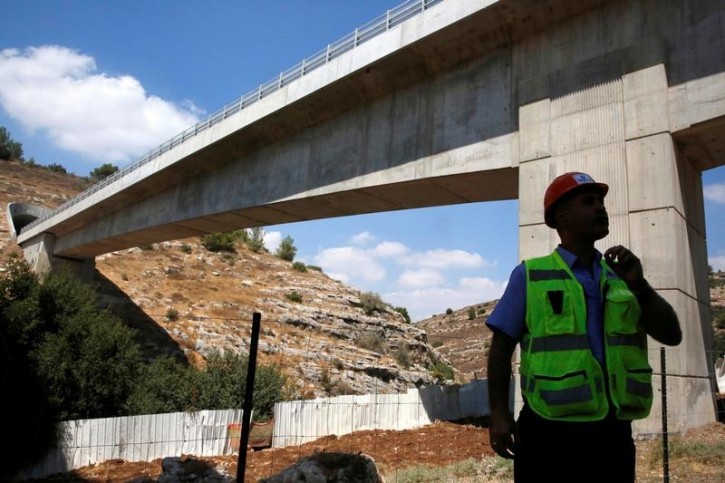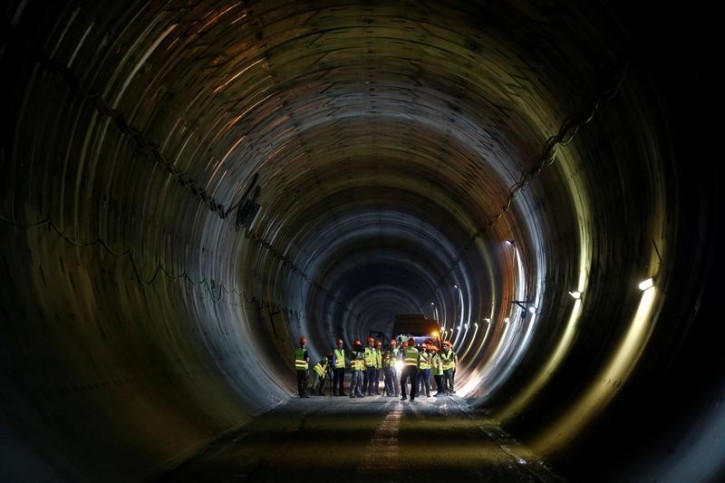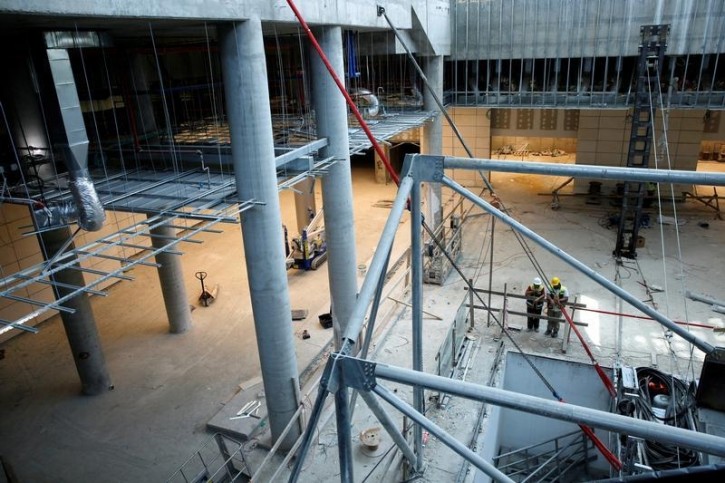 Jerusalem – Tel Aviv and Jerusalem are only 60 km (40 miles) apart but they often feel like different planets, not just in terms of mentality but because the commute from the Mediterranean to the hills can sometimes take two hours.
Jerusalem – Tel Aviv and Jerusalem are only 60 km (40 miles) apart but they often feel like different planets, not just in terms of mentality but because the commute from the Mediterranean to the hills can sometimes take two hours.
Subscribe to our Daily Roundup Email
That is set to change in the next 18 months with the completion of a $2 billion, high-speed rail line that will slash the time between the high-tech, business center and Jerusalem’s Old City to just 30 minutes.
After more than a decade in the planning, the project, which has involved boring tunnels through mountains and spanning bridges over deep valleys, promises to transform Israel’s two largest cities, or at least bring them a little closer.
“We are doing in Israel what was done 200 years ago in the United States, after World War Two in Europe and in recent decades in Asia,” Transport Minister Yisrael Katz said on Tuesday, touting several new rail lines in the works. “The main aim is to connect Jerusalem to the rest of the country.”
There is already a train between Jerusalem and the coast — built during the Ottoman empire and added to by the French and the British — but it’s a slow, scenic route that takes an hour and 40 minutes, not ideal for commuting. That said, around 7,500 people still ride it most days.
The new line takes a more direct route, cutting through the steep hills between the Mediterranean and Jerusalem, which sits 800 meters (2,640 feet) above sea level.

Working with 10 foreign companies, the line runs over 10 bridges and through five tunnels. Construction began in 2010 and is scheduled to end in March 2018.
Double-decker trains holding around 1,700 passengers will travel at 160 km/h. The plan is for four departures an hour, serving 50,000 commuters a day, or 10 million a year, said Boaz Zafrir, the chief executive of Israel Railways.
Katz believes the train will give a jolt to Jerusalem’s economy, encouraging more people from the coast to open businesses in the city, which is more religious and conservative than Tel Aviv. Some Tel Avivians, fed up with high rental costs and high humidity, may also decide to move to Jerusalem.
The new line also promises to be a boon for foreign diplomats, Israeli government employees and parliament members, many of whom live on the coast but commute to Jerusalem almost daily and often lament the traffic jams.


Fifty One summers ago, in 1965, I was in EY for the first time; then, there was a train from Haifa to Jerusalem, which bypassed Tel Aviv. There is no longer such a route in service. In any event, I remember that the trains cars were old, and were made in France. I don’t mean to be graphic, but I was astounded as when I went into the men’s room on one car, the toilet actually opened up onto the tracks. Today, for health reasons, such a device would never be permitted. In any event, I remember the train chugging its way up the Judean Hills, as we approached Jerusalem. There was a food car on the train, and some soldiers cleared the way, in order for us to access the food car, since the train was crowded (standing room only). I remember that there was a Chareidi man on the train who had no derech eretz. He shoved me out of the way in a most rude manner, as he wanted to pass me. Also, I remember that they had those old wooden slat type shades on the train, which functioned as protection from the sun. One Israeli stated “Hashemesh”, and pulled those blinds down. The trains then were very inexpensive, and provided reasonably good service.
This is great for charedim. Now charedim have all they need to go to work. Lapid established that those over 24 by 2017 can work with no army service. Thats right zero army service. That law has remained under the new collation government as well.Now charedim who have no cars have an easy means of transportation.
Askanim , if we really want to fight poverty in Israel please assist and encourage charedi men to get high paying jobs like tech or health jobs. The best way to fight poverty is thru job creation. And all this can’t happen without the push of the American askanim.
160 km/hr is kidstuff for China where they have a 20000 km network of high speed railway, running at 300 km per hour!